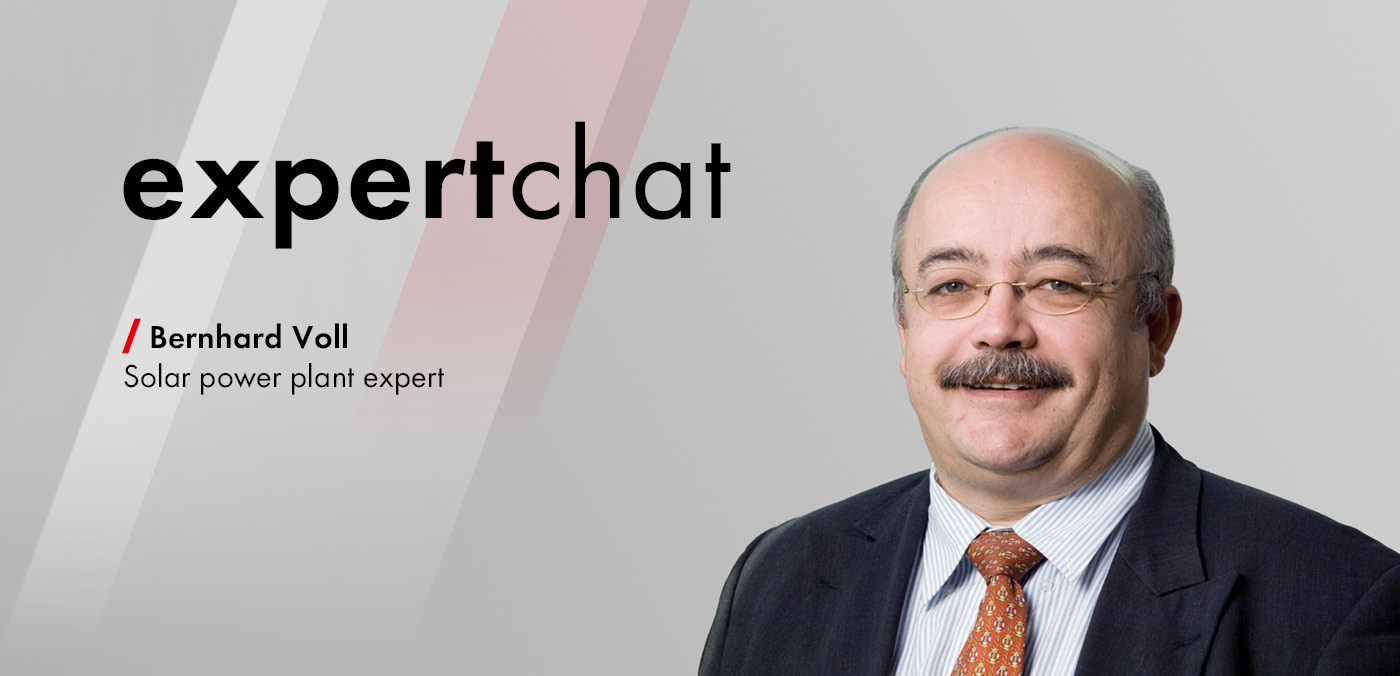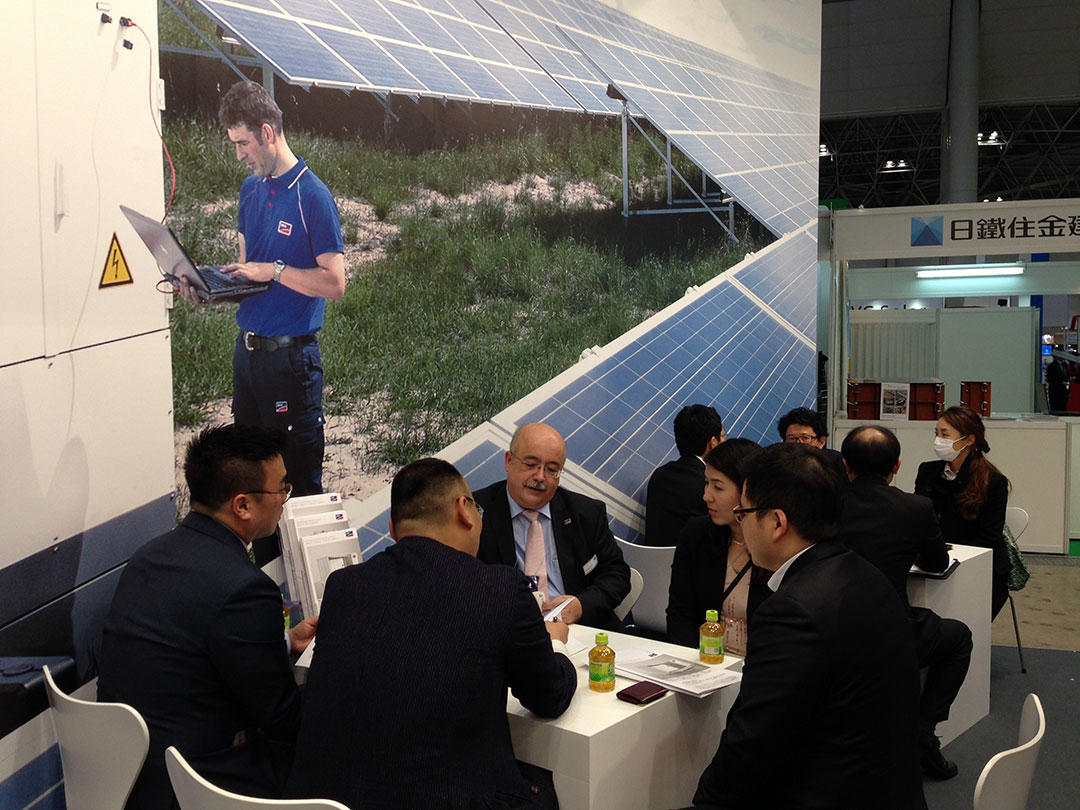PV projects: A cheap start usually means an expensive end.

Bernhard Voll wants nothing less than to make a lasting improvement to people’s lives with PV systems. So it’s useful that the SMA expert for PV power plants has a lot of experience and knows all the pitfalls in the implementation of PV projects. Besides this, he is calling for a look at other fields of application to make more diverse use of inverters. He already has some specific ideas.
You started your career in the nuclear power industry. Now you are a passionate proponent of renewable energy. What caused the change of mind?
In 1985, when I was still working in nuclear power, everybody thought it was the future. But we quickly realized not only that there were serious problems with regard to waste but also that not all countries shared Germany’s safety philosophy. After Chernobyl and Three Mile Island, I got to thinking. When I then ended up in wind energy in a roundabout way, I realized how simple and in harmony with nature energy generation can be. Seeing Francis Ford Coppola’s film Koyaanisqatsi was also an important event. It really moved me. I realized that my generation was ravaging our planet and that we would leave our children a desert if we just carried on what we were doing. I therefore see it as my job to help leave a world worth living in for future generations.
You have been involved in a lot of PV projects. Which has stuck in your memory and why?
A project in Jordan. I was called in because our customer was entangled in a hopeless dispute with the owner over technical details. After a bit of time and discussions that got ever more heated, I used humor and my own intractability to ensure that we had a laugh and quickly solved all the problems in such a way that everyone was happy. of projects. And that’s what’s always special about the PV projects that I’ve been working on: it’s the people who count during the implementation.
What is important when installing large-scale PV power plants?
It is absolutely crucial to keep an eye on the long-term costs. A cheap start usually means an expensive end. It is extremely important to choose technology with which you can keep generating solar power safely and cost-effectively for the next 25 years. I would also talk to the grid operator and make grid connection an absolute priority. It is also important to involve suppliers early and to communicate closely with local residents. It’s useful to know whether there are local efforts to acquire the municipality as an electricity customer. Projects are easier when everyone’s in it together.
What are currently the major challenges for the implementation of PV power plants?
There are several right now: It is increasingly difficult to manage the growing restrictions and complexities of the approval process. In some cases, large PV parks are also viewed critically by direct residents. Above all, it is getting harder to find suitable grid connections with enough connection capacity. Moreover, profit margins are always being squeezed by competitive pressure. This plays into the hands of suppliers who pay less attention to quality in favor of price.
Another major issue in Australia, for example, is the allocation of grid losses. This can mean that you plan and build a profitable PV system, but then, when a competitor builds their own nearby, the grid usage fees suddenly increase and profitability declines.
In short: Grid connection is becoming more difficult, politicians are thinking about short-term opportunities rather than the long-term future, and growing complexity is competing with falling profits – not a particularly good mix. In this respect, it’s now extremely important to think about additional applications like storage technologies and electrochemistry that are also important for the global energy transition. And suddenly you have space to breathe again.
What areas of application do you envisage for inverters and system solutions in this context?
When we turn an inverter into a converter, it’s no longer only able to convert from direct current into alternating current but also the other direction. This enables brand new applications in chemistry, in the steel industry, in battery projects or in the mechanical engineering industry. The key term here is DC Industry, where energy converters are required that either convert electricity from the grid into electricity for the application or vice versa. We have to take a broader look at applications that have something to do with energy and need a grid. Or, instead of simply continuing to build power lines, to actually think about producing other energy carriers from surplus power generation. There are also countless applications in the mobility sector. It’s worth thinking outside the box here, which is what SMA’s founders did back in 1981. When they got started with power electronics, a lot of people dismissed it as a crazy idea and ended up eating their words. With vision and courage, SMA has achieved a lot so far.
How has the industry changed within the last five years? And what trends are emerging?
There used to be a lot of enthusiasts around, who focused mainly on the environmental aspects and were simply excited by the technology. Now it’s increasingly investors, who are chiefly interested in risk and return. Ten years ago, there was a feeling that we were starting something new, renewable energies were still exotic; today they are standard and less exciting. However, that also has its good sides. The industry no longer has to look for ways to make renewable energy more mainstream, and fossil fuels are playing an ever smaller role.
There is a major trend toward the optimization of energy costs over the service life of the system coupled with ever greater requirements for grid services. SMA is in a good position here. With the SMA Energy System Large Scale, we offer a modular concept that can be used to implement PV power plants, link sectors and use or generate energy cost-efficiently. Whether with the Medium Voltage Power Station as a fully integrated system solution, the Sunny Central inverter as a highly flexible converter for solar and battery applications, or the comprehensive system solutions of SMA Sunbelt Energy – our range of products and services is as diverse as the array of applications.
Which renewable energy projects would you like to realize?
In terms of technology, I would be interested in a fully integrated project for the entirely self-sufficient supply of a large off-grid system with solar energy, a battery, an electrolyzer and a fuel cell. Personally, I am attracted to projects that make as many people as possible happy and in which we can make lasting improvement to the living conditions in collaboration with other suppliers, EPC, project developers, owners and the population.


Morning
I wanted to register for PV maintenance course but the forms are on another language and not o. English, please send me the English version
Regards
Sydney Tshehla
Hi Sydney,
Please check our courses here: https://solaracademy.sma.de/en/courses.html
Sunny regards,
Carolyn
Thank you for sharing this information, despite my lack of experience in this field.